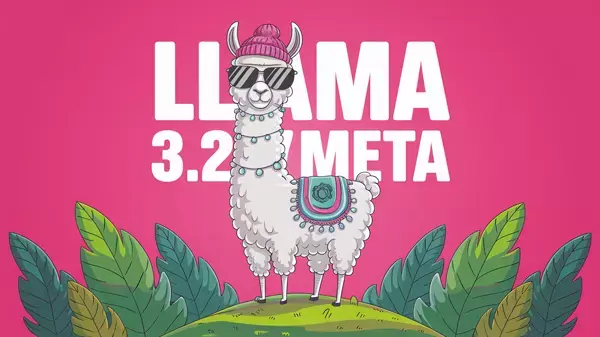Llama 3.2

A new generation of AI language models from Meta, including lightweight and multimodal versions. Create AI applications on mobile, analyze images and text, all with open and customizable models
Llama 3.2: Meta's Open and Accessible Next-Generation AI Language Model
Llama 3.2 represents a significant leap forward in the accessibility and versatility of large language models (LLMs). Developed by Meta, this new generation of AI boasts lightweight versions optimized for mobile deployment and multimodal capabilities, allowing for the seamless integration of image and text analysis within a single framework. Crucially, Llama 3.2 emphasizes open-source principles, providing developers with customizable models to build a wide array of AI applications.
What Llama 3.2 Does
Llama 3.2 is a powerful LLM capable of performing a variety of natural language processing tasks. Its core functionality revolves around understanding and generating human-like text, but its multimodal capabilities extend this to include image understanding and analysis. This means developers can create applications that not only process text but also interpret and react to visual input.
Main Features and Benefits
- Lightweight Models: Optimized versions of Llama 3.2 are designed to run efficiently on mobile devices, removing the computational constraints that previously limited the deployment of sophisticated AI models on smartphones and other resource-constrained platforms. This opens up exciting possibilities for mobile-first AI applications.
- Multimodal Capabilities: The integration of image processing allows for a richer and more nuanced interaction with data. Developers can build applications that analyze images alongside text, enabling tasks such as image captioning, visual question answering, and more sophisticated content understanding.
- Open and Customizable: Unlike many proprietary LLMs, Llama 3.2's open-source nature allows developers to access and modify the model's architecture and parameters. This fosters innovation and allows for tailored solutions to specific needs and domains.
- Improved Performance: While specific quantitative comparisons require further analysis and benchmarking, Meta claims significant advancements in performance and accuracy compared to previous iterations of the Llama family.
Use Cases and Applications
The open and versatile nature of Llama 3.2 makes it suitable for a wide range of applications across various industries:
- Mobile-first AI: Powering intelligent assistants, chatbots, and translation apps directly on mobile devices, offering offline functionality and reduced latency.
- Image-based Applications: Creating AI-powered image captioning tools, developing advanced search capabilities for visual data, and building applications for automated image tagging and categorization.
- Content Creation and Summarization: Generating human-quality text for various purposes, including automated report generation, summarization of lengthy documents, and creative writing assistance.
- Educational Tools: Developing interactive learning applications that adapt to individual student needs and provide personalized feedback.
- Healthcare: Assisting with medical image analysis, improving patient communication, and aiding in the development of diagnostic tools.
Comparison to Similar Tools
Llama 3.2 distinguishes itself from similar LLMs through its combination of open-source availability, lightweight mobile versions, and multimodal capabilities. While other models might excel in specific tasks or offer similar functionalities, the combined package of Llama 3.2 makes it a compelling option for developers seeking a versatile and accessible solution. Direct comparisons to other LLMs like GPT-3, LaMDA, and others require detailed benchmarking studies focusing on specific tasks. However, the open nature of Llama 3.2 encourages community-driven evaluation and comparison.
Pricing Information
Llama 3.2 is offered free of charge. This open-source model removes significant barriers to entry for developers and researchers, accelerating innovation and democratizing access to cutting-edge AI technology.
Conclusion
Llama 3.2 represents a significant milestone in the evolution of accessible and powerful AI. Its open-source nature, combined with its lightweight and multimodal capabilities, opens up a wealth of opportunities for developers to build innovative and impactful AI applications across various sectors. The free availability further enhances its potential to drive wider adoption and accelerate progress in the field of artificial intelligence.